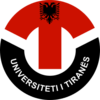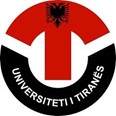The higher education in Albania has its roots in 1946 when the first Higher Pedagogical Institute Biennial was opened, followed by the Institute of Science, founded in 1947. In the period from 1946 to 1956, six higher institutes operated in Tirana: Pedagogical Institute, Polytechnic Institute, Institute of Medicine, Institute of Agriculture and Institute of Economics and Law. Based on these institutes, the University of Tirana was established by the decision of the Council of Ministers of the Republic of Albania, no. 207, dated 30.05.1957, and was named State University of Tirana. This institution was created to meet the growing needs of the country for qualified specialists. A large number of qualified professors at foreign universities made their valuable contribution to strengthening and consolidating the institution.
Currently, the University of Tirana is the largest university in the country. It consists of six faculties and two institutes and offers 155 programs in all three cycles of study, with 790 full-time academic staff and approximately 23,000 students. Thanks to its tradition, high level of qualification, training and certification, the University of Tirana remains the preferred choice for higher education studies in Albania.
UT was praised by the President of the Republic with the Order of Honor of the Nation, with a quote for the extraordinary contribution to the development of science, education, culture and economy of Albania, with decree no. 1959, dated 19.11.1997. One of the goals and objectives of the University of Tirana is its recognition at international levels. In this context, in some of its institutions, bachelor and master programs in English have been introduced, aiming at a continuous increase.
UT is a partner institution in several European Commission cooperation programs such as Tempus, Erasmus Mundus Action 2, IPA, respectively: Join EU-SEE, Basileus, Pacinno, Eureka, Tempus Interface. UT has also signed many cooperation agreements with various universities and institutions at national, European and world level. These framework agreements aim at academic and student exchanges, joint research programs, academic exchanges in publications, journals, organizing various conferences, etc. UT is also a member of many foreign networks such as AUF, UNICA, UNIMED, CMU, etc.
The Faculty of Economy (FE), established in 1952, became part of UT in 1957. At that time, FE offered majors only in two branches: Economics and Accounting. During the years that followed, the Faculty was enlarged, and in 1990 it offered majors in six branches. After 1991, FE was reorganized and restructured radically in form and content. Currently, the faculty operates on the basis of new teaching programs, in accordance with the programs of Western Universities, based on the Bologna declaration and adapted to the conditions of the country, offering study programs in all three cycles: Bachelor, Master and Doctorate. The Faculty of Economics has 6 departments: Department of Finance, Department of Accounting, Department of Management, Department of Marketing, Department of Economics and Department of Statistics and Applied Informatics. Today, as a leading academic institution, FE has enrolled a path towards sustainable development education. Our interdisciplinary research teams are engaging progressively in sustainability-related projects, from renewable energy and conservation efforts to social and economic development initiatives.
Views: 217




